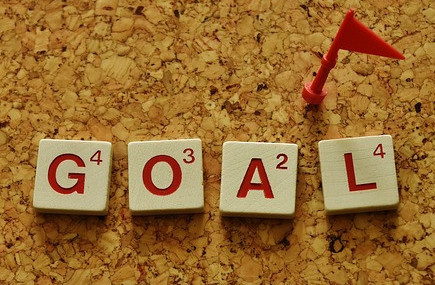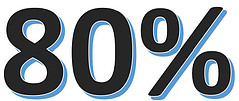
In table tennis, setting goals is essential for players to continuously improve their skills to help them achieve success. However, it can be hard to stick to goals. To increase the effectiveness of goal setting it is important to follow the SMART framework. Before we dive into helping you set goals, first we need to understand what SMART goals are. SMART goals are Specific, Measurable, Achievable, Relevant and Time-bound. In this post we will delve into the concept of SMART goal setting, the importance of setting goals for table tennis and how it can help you maximise your potential.
Specific
A SMART goal in table tennis should be clear and specific. Ensuring this allows you to focus your effort on the task and help you feel motivated to achieve your goals. Rather than having a generic starting objective such as “I want to get better”, specify exactly what aspect you want to improve. Some examples include:
- “Improve my backhand topspin technique”
- “Increase the amount of spin on my serves”
- “Have a more consistent forehand flick”
There are many aspects you could narrow down to in table tennis. It is down to you to decide what specifically you want to improve on. When drafting your goal ask yourself the following questions:
- What do I want to achieve?
- Why is this important?
- Who can help me achieve this goal?
Once you have a clear idea on your specific goal and you know you have the correct resources, we can now move on to how to achieve it.
Measurable
Making sure you are able to measure or track your progress is essential. It allows you to evaluate your success to help stay motivated as you see yourself improving. Evaluating your progress helps you to stay focused and feel the excitement of achieving your goal. To make your goal measurable ask yourself the following questions:
- How many?

- How much a percentage increases by?
- How will I know when my goal is achieved?
For example, using these questions, a specific table tennis example includes:
- During multi-ball focusing on forehand flick, set yourself a target of achieving 18/20 (or 90%) flicks on the table. At the end of every week, have someone feed you 20 balls and record how many you successfully get back. Over the weeks as you keep practicing you should see this number increasing getting closer to your target.
Achievable
The goal you set must be realistic and within your reach. You should set goals that are challenging and push your boundaries without overwhelming you. While it is important to aim high, setting goals that are too far-fetched can be demotivating. The same can be said if your goal is too easy for you. You should consider your current skill level and the resources you have available to help you set an achievable goal.
For example, if you are a beginner, setting a goal to increase your forehand flick consistency to 100% would be very challenging and most likely unrealistic. However, you can keep the same specific goal and reduce the percentage to 50/60% to make it more achievable. Similarly, if you are a more advanced player, you would want to be pushing for a higher percentage rather than around 60% as this would be more achievable for you.
Relevant
Your set goal should be relevant and aligned with your overall objectives in table tennis. For some the overall objective is to get better. Therefore, if you have a really good consistent forehand and a weak backhand there would be more value in setting a SMART goal towards improving your backhand. You should reflect on your strengths, weaknesses and aspirations. Choose goals that are relevant to your specific needs and will contribute to your overall progression in table tennis.
Time-bound
A SMART goal must have a clearly defined time frame for completion. Setting a deadline creates a sense of urgency and helps you stay focused on achieving your goal. It helps to prevent procrastination as you can track your progress effectively keeping you motivated. Some examples you could set yourself include:
- “Improve my forehand flick to 80% accuracy before my first tournament/match of the season”
- “In 6 months time, be able to generate more spin on my backspin serve”
Benefits of SMART Goal Setting
- Increased motivation – setting SMART goals helps boost motivation by providing achievable and measured targets to strive for. As you make progress towards your goals, the sense of achievement fuels your drive and enthusiasm.
- Enhanced focus – SMART goals provide a clear direction for you to focus your attention. Helping to prevent you from becoming overwhelmed or non-relevant training sessions for your goal.
- Greater success – following the SMART framework will maximise your chance of success in table tennis. Using the 5 principles, you will create a road map for continuous improvement to unlock your full potential.
Conclusion
Goal setting is a powerful tool in table tennis for those seeking to enhance their skills. Using the SMART framework helps players remain focused, stay motivated and track their progress effectively. I would suggest any players to embrace SMART goal setting and embark on a rewarding journey of growth an improvement. You can read this article on SMART goal setting with some more generic examples.
If you have any examples, specifically related to table tennis, of the SMART principles comment them below to help inspire others for ideas. Also, if you have any questions feel free to ask and we will be more than happy to help you.



Thanks so much for sharing. This article brilliantly highlights the significance of goal setting in table tennis. Setting clear goals not only drives improvement but also adds a sense of purpose to the game. I’m curious, what strategies do you recommend for staying motivated and on track when striving to achieve these goals consistently?
Hi Kiersti, I am glad you enjoyed this article on goal setting. The best way I have found for staying motivated is following the SMART principles, setting goals with clear expectations within a timed frame, and being able to record your progress is a great way to see how far you have come. Some other strategies I like to include in my coaching sessions is to keep changing it up. Even though you have one goal in mind, you should not do the same practice drills over and over, this will get boring very fast! The use of purposeful practice keeps people who attend my coaching sessions engaged and striving to do better, increasing their motivation.
If you have any other questions feel free to ask. I hope this has helped give you some strategies on how you can stay motivated.